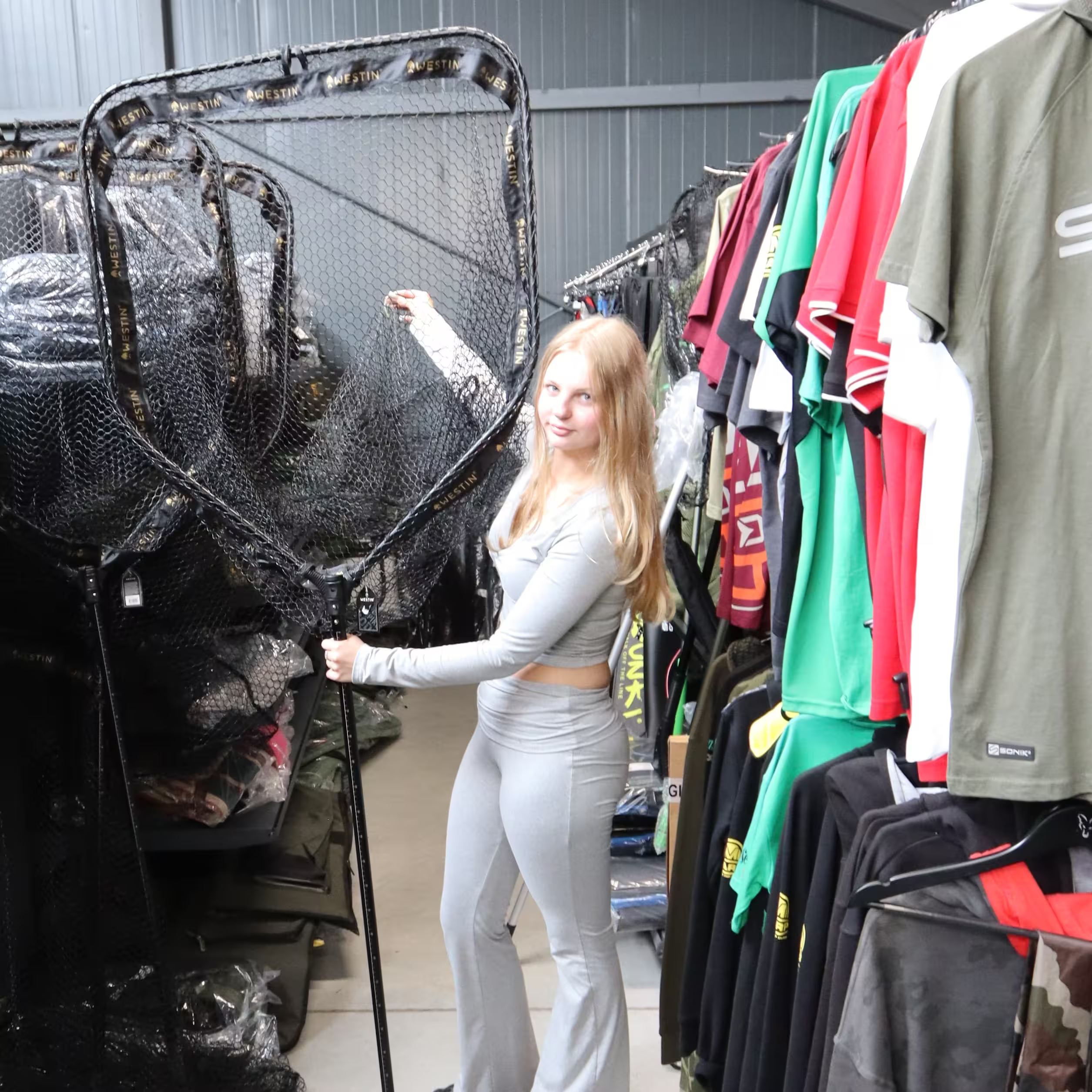Ever since I can remember, those first early mornings spent by the water always ended with my heart pounding as I watched a big fish approach the surface… and then comes the moment of truth—the landing net. It’s precisely this moment that has decided countless times whether the story would end in triumph or heartbreak.
That split second when everything hangs in the balance. Your rod bent double, line singing, and there it is—the fish of a lifetime just beneath the surface. This is when your landing net transforms from a piece of kit gathering dust in your bag into the most crucial tool in your arsenal.
Why Your Landing Net Is Essential Kit You Can’t Forget
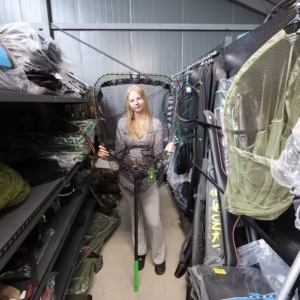
Let’s be honest—you’ve probably heard every excuse in the book about why someone “doesn’t need” a landing net. “I can just beach them,” they say, or try unsafe hand-landing techniques. But here’s the reality: a quality landing net isn’t just another accessory cluttering up your tackle bag. It’s insurance for your fishing success.
A proper landing net dramatically increases your chances of successfully landing larger specimens. When you’re fighting a personal best, the last thing you want is to lose it in the final moments because you tried to horseshoe it onto the bank or grab it with wet hands.
More importantly, it protects both the fish and your expensive tackle. The right mesh minimizes damage to the fish’s protective slime coat and scales, ensuring healthier releases. It also prevents those heart-stopping moments when a thrashing fish throws the hook right at your feet or snaps your line against sharp rocks.
Finally, landing nets enable quick, safe completion of the fight. Instead of prolonging the battle trying to tire the fish enough for an unsafe hand landing, you can net it efficiently and get it back in the water faster—better for the fish and better for your catch rate.
How to Choose the Right Landing Net: What to Look For
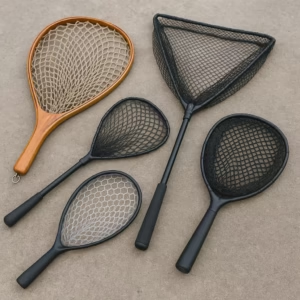
Selecting the right landing net isn’t as straightforward as grabbing the first one you see in the tackle shop. Several key factors will determine whether your net becomes your best fishing companion or an expensive lesson in buyer’s remorse.
Handle Size and Length
The golden rule here is simple: match your net to your fishing situation. For fishing from low banks or boat fishing where you’re close to the water, a shorter 4-6 foot handle will be perfectly adequate and much easier to maneuver.
However, if you’re regularly fishing from high banks or steep-sided commercial fisheries, you’ll want to invest in a telescopic or multi-piece net that can extend to 8 feet or more. There’s nothing more frustrating than having a good fish within arm’s reach but just beyond your net’s capability.
Fishing from high piers or harbour walls? A super-long handle isn’t always the answer. Consider a drop net to safely lift fish from below pier level without over-stressing your line, rod, or the fish.
Telescopic handles offer the best of both worlds—compact storage when collapsed but extending when you need the reach. Look for quality locking mechanisms that won’t slip under pressure.
Mesh Material: Fish-Safe (and Legal) Choices in the UK
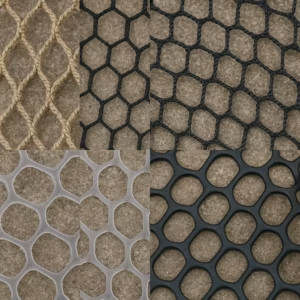
Important: In UK freshwater, you cannot use knotted or metallic mesh landing nets-byelaws require knotless mesh. That’s non-negotiable.
Knotless nylon is light, affordable, and gentle on slime and scales. It’s a solid all-rounder for coarse and game species, meeting legal requirements while being kind to fish.
Rubber-coated knotless mesh resists hook tangles, dries faster, and absorbs less odour. It’s particularly excellent for lure fishing with treble hooks, where tangles can be a real problem.
Full rubber mesh represents the most hook-resistant option and is easiest to disinfect and clean. It’s slightly heavier but excellent for serious catch-and-release angling. Research shows rubber meshes significantly reduce handling damage to fish.
Whichever you choose, always rinse and follow the “Check, Clean, Dry” protocol after each trip to prevent spreading diseases like KHV and invasive species-many fisheries now require this.
Frame Construction and Shape
The frame is your net’s backbone, and here you’re balancing durability against weight. Aluminium frames offer an excellent compromise—strong enough for big fish but light enough for extended use. Modern composite materials are also increasingly popular, being both lightweight and corrosion-resistant.
Steel frames are strong but heavy and prone to corrosion in UK conditions—they’re rarely the preferred choice for most angling situations.
Frame shape matters too. Traditional round nets work well for most situations, but “D” shaped frames can be easier to maneuver in tight spots and often have a larger effective opening when approaching fish from certain angles.
Additional Features Worth Considering
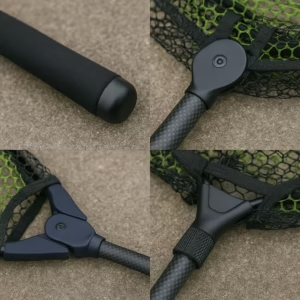
Modern landing nets come with various features that can enhance your fishing experience. Folding nets are brilliant for mobility-particularly useful for the roving angler who doesn’t want to carry a full-length net all day.
EVA foam handles provide better grip in wet conditions and are more comfortable during extended use. Quality telescopic mechanisms with secure locking systems are crucial if you’re opting for an extending handle.
Some nets feature magnetic release systems for quick deployment, while others include measuring marks integrated into the frame—handy for quick fish measurements before release.
Recommended Models Available in the UK (2025)
When shopping for landing nets in the UK market, several brands consistently deliver quality and value. Fox International continues to lead with their range of carp-specific nets, particularly their 42″ triangular specimen nets with soft knotless mesh for large carp waters.
Preston Innovations excels in the match and feeder fishing sector, with their Quick Dry mesh technology being particularly popular among competitive anglers who need fast, efficient netting in the 16-20″ range.
Korum has built a solid reputation for innovative design, particularly their Power Folding Triangle Latex nets which have become favourites among roving anglers targeting barbel and chub (typically 26-30″ deep “spoon” nets).
You can also explore a wide range of landing nets and accessories at
cal22.pl – Landing Nets & Accessories
, including carp, match, predator, and telescopic models.
When reading specifications, pay attention to material composition, weight ratings, and mesh specifications. Don’t just focus on price—a £30 net that lasts five years is better value than a £15 net you replace annually.
Check recent reviews from UK fishing forums and magazines. Fellow anglers’ experiences with specific models in British fishing conditions will give you insights no manufacturer specification can provide.
Pro Techniques: Using Your Landing Net Like an Expert
Having the right net is only half the battle-knowing how to use it properly separates successful anglers from those who consistently lose fish at the net. The key is preparation and patience.
Always have your net ready before you need it. That means assembled, positioned within easy reach, and partially submerged if possible. Never try to set up your net while fighting a fish.
When the fish is ready for netting, keep the net stationary and lead the fish head-first over the rim, then lift smoothly. Never chase the fish with the net or try to scoop tail-first-that’s when most last-second losses happen.
Keep the net still and let the fish swim into it. Once the fish is over the mesh, lift smoothly and steadily. Avoid sudden jerking movements that could tear the mesh or allow the fish to escape.
Common Mistakes That Cost Fish
The biggest error novice anglers make is attempting to net fish that aren’t ready. If the fish is still fighting strongly, pulling line, or thrashing at the surface, it’s not ready for the net. Premature netting attempts result in missed opportunities and often spooked fish.
Another frequent mistake is using nets that are too small for the target species. As a guide: carp and specimen fishing typically requires 42″ triangular nets, match and feeder fishing works well with 16-20″ nets, while roving for barbel and chub calls for 26-30″ deep “spoon” nets.
Finally, poor net maintenance causes more lost fish than many realize. Torn mesh, corroded frames, or faulty telescopic mechanisms always seem to fail at the worst possible moment. Inspect your net regularly and address issues before they cost you fish.
Your Landing Net Journey Starts Here
A landing net is my silent hero-waiting patiently in the rod bag, ready for that crucial moment when everything matters. Its selection and your skill in using it can determine the success of every fishing trip.
The investment in a quality landing net pays dividends from your very first use. Whether you’re targeting roach on your local canal or specimen hunting on a prestigious carp water, the right net gives you confidence to fish boldly, knowing you can safely land whatever takes your bait.
If you’re currently looking for one, check out the selection at
cal22.pl – Landing Nets & Accessories
for models to suit every technique and species.
So, what landing net do you take to the waterside? Have you got stories of the one that got away because of netting mishaps, or perhaps a treasured catch that your trusty net helped secure? Share your experiences in the comments below-every angler’s story adds to our collective wisdom.
Remember, in fishing as in life, it’s often the preparation and attention to detail that separates success from disappointment. Your landing net is more than just equipment – it’s your guarantee that when opportunity strikes, you’ll be ready.
Tight lines!
UK Rules & Fish Care Quick Reference
- Legal requirement: Only knotless mesh allowed in UK freshwater
- After fishing: Always Check, Clean, Dry your net to prevent disease spread
- Sizing guide: Carp 42″, Match 16-20″, Roving/Barbel 26-30″
For more essential fishing guides and UK angling insights, explore our complete library at Fishingtime.co.uk. From tackle reviews to technique tutorials, we’re your comprehensive resource for B

